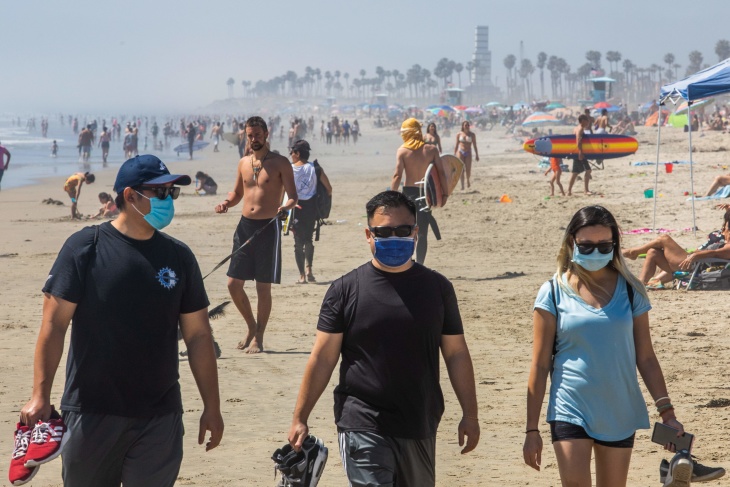SANTIAGO, Chile — The Latin America and the Caribbean region will experience a contraction of -7.7 percent in 2020 but will have a positive growth rate of 3.7 percent in 2021, due mainly to a statistical rebound that will nonetheless be insufficient for recovering the economic activity levels seen prior to the coronavirus pandemic (in 2019), ECLAC indicated today in a new report.
ECLAC released its Preliminary Overview of the Economies of Latin America and the Caribbean 2020 — one of the United Nations organization’s flagship annual reports — during a virtual press conference given by its Executive Secretary, Alicia Bárcena.
According to the document by the Economic Commission for Latin America and the Caribbean (ECLAC), in a context of global contraction, Latin America and the Caribbean is the region in the developing world that has been hardest hit by the crisis stemming from COVID-19.
In the decade prior to the pandemic, the region was on a low-growth trajectory, and in 2020 it faces an unprecedented combination of negative supply and demand shocks, which is translating into the worst economic crisis in the last 120 years.
Although the significant fiscal and monetary efforts made by countries have served to mitigate the effects of the crisis, the pandemic’s economic and social consequences have been exacerbated by the structural problems that the region has suffered historically. In 2021, ECLAC foresees a positive GDP growth rate that will fundamentally reflect a statistical rebound, but the process of recovering pre-crisis levels of Gross Domestic Product (GDP) will be slow and will not conclude until 2024.
“The growth dynamic in 2021 is subject to high uncertainty related to the risk of renewed outbreaks of the pandemic, the agility with which vaccines are produced and distributed, and the capacity to maintain fiscal and monetary stimulus to support aggregate demand and productive sectors. Making progress on sustainable and inclusive growth necessitates a productive transformation towards environmentally sustainable sectors, which would favor job creation and technological innovation,” Alicia Bárcena stated.
The region’s weaknesses and structural gaps, its narrow fiscal space, inequality, limited coverage and access to social protection, elevated labor informality, productive heterogeneity and low productivity are central to understanding the extent of the pandemic’s effects on the region’s economies, their difficulties for implementing policies that would mitigate those effects, and the challenges they face in undertaking a sustainable and inclusive economic reactivation.
Before the pandemic, the region already had low economic growth: 0.3% on average in the 2014-2019 period, with a 0.1% rate notched in 2019. With the arrival of the pandemic, this low economic growth was compounded by negative external shocks and the need to implement policies aimed at confinement, physical distancing and the suspension of productive activities, which meant that the health emergency ended up prompting the worst economic, social and productive crisis that the region has ever lived through. The contraction in economic activity has been accompanied by a significant rise in the unemployment rate, which is forecast at around 10.7% in 2020; a steep fall in labor participation; and a considerable increase in poverty and inequality.
According to the projections released by the United Nations organization, South America is seen contracting by -7.3% in 2020 and growing by 3.7% in 2021; growth in Central America is expected to shrink by -6.5% in the current period and expand by 3.8% next year; while the Caribbean is seen contracting by -7.9% in 2020 and growing by 4.2% in 2021.
ECLAC’s document emphasizes that to keep the region from perpetuating its low-growth dynamic, expansionary fiscal and monetary policies are needed along with environmental and industrial policies, all of which would enable the structural transformations that the region requires and would promote sustainable development.
It also poses the need to prioritize spending on the economic and social reactivation and transformation by fostering employment-intensive and environmentally sustainable investment in strategic sectors; to extend the basic income to people living in situations of poverty; provide financing to Micro, Small and Medium-sized Enterprises (MSMEs); offer incentives for productive development, the digital revolution for sustainability and clean technologies; and universalize social protection systems.
The report contends that beyond national efforts, the region’s economic reactivation and transformation will require financing and international cooperation. In this area, it stresses the need to utilize instruments such as the issuance and reallocation of the International Monetary Fund’s Special Drawing Rights (SDRs) to strengthen the reserves of the region’s countries and regional agreements; include vulnerable middle-income countries in the G20’s debt moratorium initiative (DSSI) and also set in motion the debt for climate change adaptation swap in the case of the Caribbean, along with the creation of a resilience fund; and capitalize multilateral, regional and national credit institutions.

